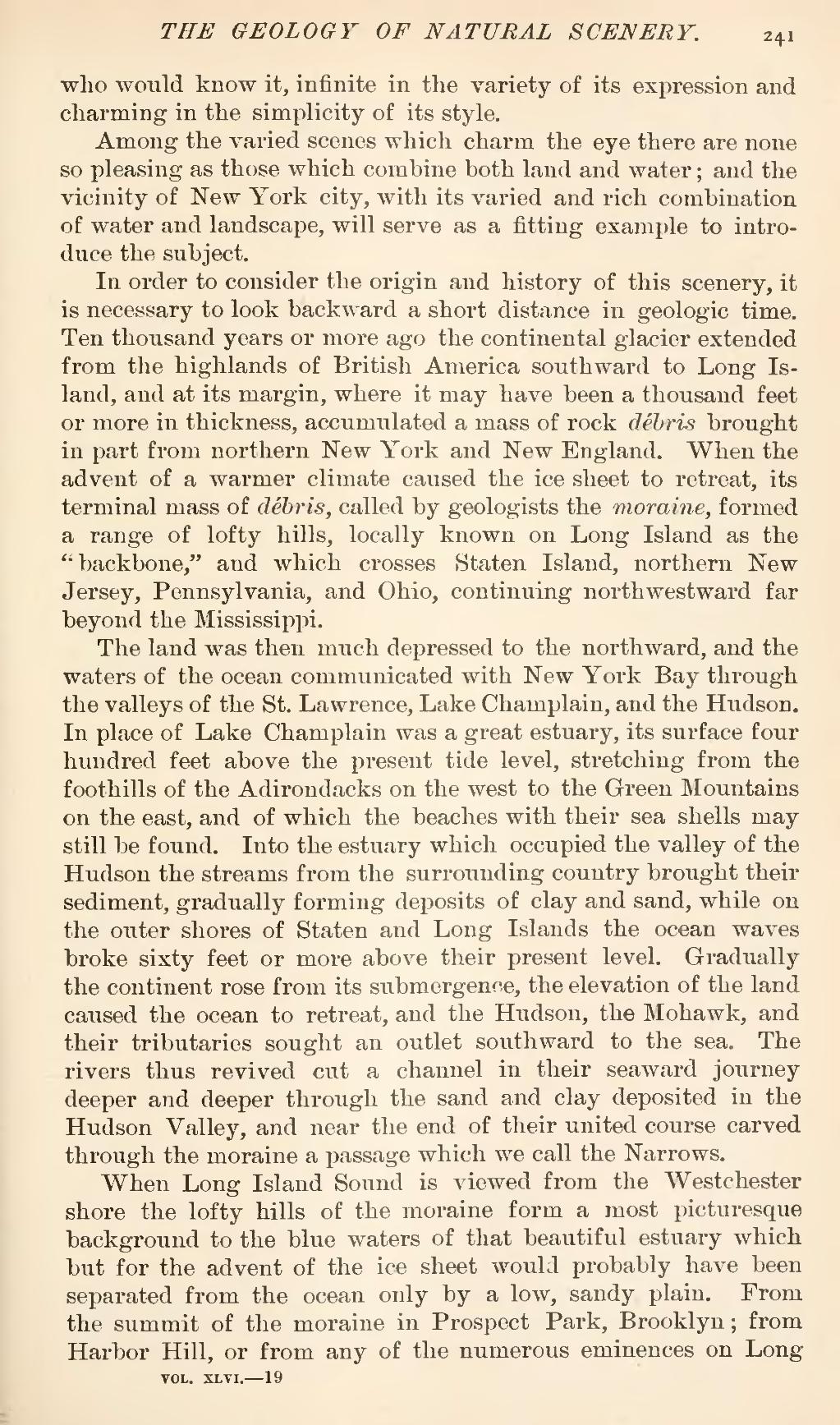who would know it, infinite in the variety of its expression and charming in the simplicity of its style.
Among the varied scenes which charm the eye there are none so pleasing as those which combine both land and water; and the vicinity of New York city, with its varied and rich combination of water and landscape, will serve as a fitting example to introduce the subject.
In order to consider the origin and history of this scenery, it is necessary to look backward a short distance in geologic time. Ten thousand years or more ago the continental glacier extended from the highlands of British America southward to Long Island, and at its margin, where it may have been a thousand feet or more in thickness, accumulated a mass of rock débris brought in part from northern New York and New England. When the advent of a warmer climate caused the ice sheet to retreat, its terminal mass of debris, called by geologists the moraine, formed a range of lofty hills, locally known on Long Island as the "backbone," and which crosses Staten Island, northern New Jersey, Pennsylvania, and Ohio, continuing northwestward far beyond the Mississippi.
The land was then much depressed to the northward, and the waters of the ocean communicated with New York Bay through the valleys of the St. Lawrence, Lake Champlain, and the Hudson. In place of Lake Champlain was a great estuary, its surface four hundred feet above the present tide level, stretching from the foothills of the Adirondacks on the west to the Green Mountains on the east, and of which the beaches with their sea shells may still be found. Into the estuary which occupied the valley of the Hudson the streams from the surrounding country brought their sediment, gradually forming deposits of clay and sand, while on the outer shores of Staten and Long Islands the ocean waves broke sixty feet or more above their present level. Gradually the continent rose from its submergence, the elevation of the land caused the ocean to retreat, and the Hudson, the Mohawk, and their tributaries sought an outlet southward to the sea. The rivers thus revived cut a channel in their seaward journey deeper and deeper through the sand and clay deposited in the Hudson Valley, and near the end of their united course carved through the moraine a passage which we call the Narrows.
When Long Island Sound is viewed from the Westchester shore the lofty hills of the moraine form a most picturesque background to the blue waters of that beautiful estuary which but for the advent of the ice sheet would probably have been separated from the ocean only by a low, sandy plain. From the summit of the moraine in Prospect Park, Brooklyn; from Harbor Hill, or from any of the numerous eminences on Long
